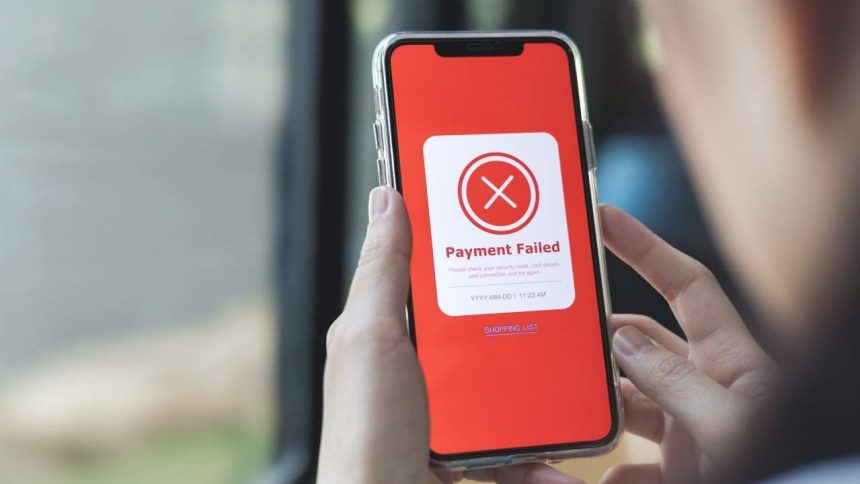I used to think saving was about willpower. Cut back, stay disciplined, stick to the plan. Then I started working for a bank and started paying closer attention to my statements. I noticed numerous small transactions being deducted from my account for services that I rarely or never used.
It was that plant identification app (costing $7.99 a month) that my wife and I meant to try for a month for our garden, but we forgot to cancel it. It was that free trial on a streaming service that rolled over into a monthly subscription of $7.99. Payments hid — hard to identify by their sometimes-cryptic descriptions — on our bank statement alongside that gym membership we hadn’t used since having a baby a year ago.
We wanted to cut back, begin saving more, and apply more budget austerity in the future. We could opt for the willpower and self-control approach: create a budget and stop buying ice cream on Sunday nights — not very motivating. Or we could audit our statements for those cryptic deductions, cancel unwanted subscriptions, and set up our finances to prevent losing track of things easily. Then, we could enjoy Sunday ice creams and add more to our savings.
What did we do about the transactions that were too cryptic to determine what they were? At one point, we canceled our debit and credit card numbers — and asked our bank to issue new cards with different numbers — so we could ensure there were no fraudulent transactions.
— Matthew Doffing | Bankrate Consumer Banking Columnist
What, a ‘cancel everything’ mindset?
Now, no one wants to cancel everything. We kept our internet and electricity transactions, as well as our medical bills, coming directly out of our checking account; that’s how we were already paying our mortgage. We just went through our statement at the beginning of the year, found transactions that clearly weren’t groceries, rent or utilities, and — if we could tell what it was from the statement — we’d go to the provider’s website and cancel.
Nothing felt better than receiving an email reminder from a canceled company and knowing we just saved $7.99 a month, times 12!
Use the type of email to build momentum. For subscriptions where you thought “maybe I will use this,” ask yourself, “Can I try to go without it? How often did I use it last year? Did it make my life better or could I have gotten nearly as good a service for free?” Often, I’ve noticed that I’ve already watched everything I wanted on a streaming service. Why keep it when I spent nearly as much time scrolling titles I didn’t want to watch as I did watching a show?
We do this annually now. The small added effort requires neither a new budget, nor does it necessitate significant spending austerity, provided you target services you don’t use, use minimally, or services that have a free alternative. You miss little, and you create leftover dollars for your savings account.
Every dollar counts: An example
Here’s an example of the effect in dollar terms: We had small children and used an app-delivery service for groceries, but then a grocery store was built nearby. Bye-bye $99 a year, plus the service added surcharges on top of the grocery prices. GoDaddy messaged saying that the two domains I bought a year prior needed renewal, which is another $40 saved. We added three channels to our Amazon account for $2.99 per month each.
We’ve identified numerous expenses in this manner, but based on the examples I’ve shared so far, we’ve reclaimed $438.40 of our money that would have otherwise been withdrawn for services we no longer needed. Congratulations. If you did this in January, you’d be on your way to no longer being a member of the 25 percent of Americans who have no savings.
Let friction help you
Here’s one more trick: If your card expires or has to be replaced, consider requesting a new card number. You can also delay reactivating it so long as the delay won’t bring you any financial harm.
Friction can help you save more, even outside of canceling subscriptions, such as writing a check vs. an easy swipe of a card. If you want to be aggressive, write checks at the grocery store instead of using a card. That way, you begin looking at grocery store expenditures as “out of pocket” spending rather than the much less constrained credit card borrowing.
How to write a check
When was the last time you wrote a check? In today’s mobile banking economy, many bank customers simply don’t need to write checks. But when it’s necessary to put pen to paper, there’s a certain etiquette to follow. Fortunately, it’s as easy as it sounds with Bankrate’s guide How to write a check: A step-by-step guide. In addition to how to write a check, Bankrate provides best practices to ensure that your check is processed smoothly and securely.
Credit card transactions are also less likely to be used for needs. Debit cards make it easy to spend money you have on things you don’t need. Without a card ready to go, you might think twice before making an impulse buy. You might think this sounds like punishment, but it’s not. It’s about creating friction between you and impulse. It sounds like self-control, but it’s not; it’s just easily obtained control.
Credit card transactions also accumulate into a balance, on which you must pay a very high, often variable, interest rate, typically between 17.24 percent and 29.24 percent, according to Bankrate’s best credit cards. Avoiding a balance means avoiding interest, and the payment you’ve prevented can now go into your savings account.
If you must spend on impulse buys, use the extra cash that’s now in your account because you canceled your subscriptions. That means next month you’re more likely to have extra money that can become personal wealth in your savings account.
For example, $438.40 divided by 12 is $36.33 a month. If I spend $36.33 on fun this month without borrowing or creating new subscriptions, I will still have $36.33 next month for savings, thanks to those canceled subscriptions.
Ensure maximum dollar multiplication
As companies were using automatic payments to withdraw money from my account, I decided to use the same tools to add money to my savings account. When I didn’t renew a subscription after changing my card number, I simply went into my online bank account and set up an automatic monthly transfer to savings for the same amount and on the same date.
Once you do this for a year or more, visit your automatic transfers page in your bank’s online banking portal. It will make you even more convinced that you can grow your savings. You’ll see ten or so transactions that used to be going out the door, and now that cash flow is truly yours.
Once the balance of your savings account is growing each month, it’s time to ensure that your automatic transactions aren’t the only thing growing your balance. The average annual percentage yield on a U.S. savings account is 0.57 percent, according to Bankrate’s Simple Savings Calculator, which you also can use to run forecasts for your savings.
If you amass $1,000 in a year through these controls, and then you invest it in a savings account at 0.57 percent, you’ll only add $5.70 with interest on top of the $1,000 started with. So, if you also begin the automatic transfers as I’ve described, you’ll add $996 in cash throughout the second year as well, bringing your year-two savings balance to $2,005.70.
If the rate were at 4.00 percent APY, as is listed on savings account marketplaces right now, you’d earn $40 in interest. That’s a little more than 7 times greater contribution from interest. You’ll add $996 in cash throughout the second year as well, for a total of $2,040 (before tax) by the end of the second year.
As George Bailey in Frank Capra’s “It’s a Wonderful Life” says, “A toast to Mama Dollar and to Papa Dollar, and if you want to keep this old Building and Loan in business, [they] better have a family real quick.” Apply the same concept to your savings.
Did you know?
You can divvy up your paycheck between multiple bank accounts, typically a checking account and a savings account. It’s called split direct deposit, and it’s an easy way to ensure that every time you get paid, you also save. Get the skinny on the divvy in Bankrate’s guide: Split direct deposit: a simple way to save more money.
Bottom line
You work hard for your income. Don’t let it disappear quietly into auto-renewals and long-forgotten services.
This reset doesn’t just clean up your spending. It sets the stage for smarter habits, more substantial savings, and financial progress that builds on itself.
I talk with many families who look at budgeting, at being more self-controlled, and they’re daunted by how big it seems — and then they never start. Using a cancel-everything mindset once a year is a quick way to jumpstart spending controls on your finances. It can pay off massively over time because you’re canceling services you didn’t want anyway.
Why we ask for feedback
Your feedback helps us improve our content and services. It takes less than a minute to
complete.
Your responses are anonymous and will only be used for improving our website.
Help us improve our content
Read the full article here














